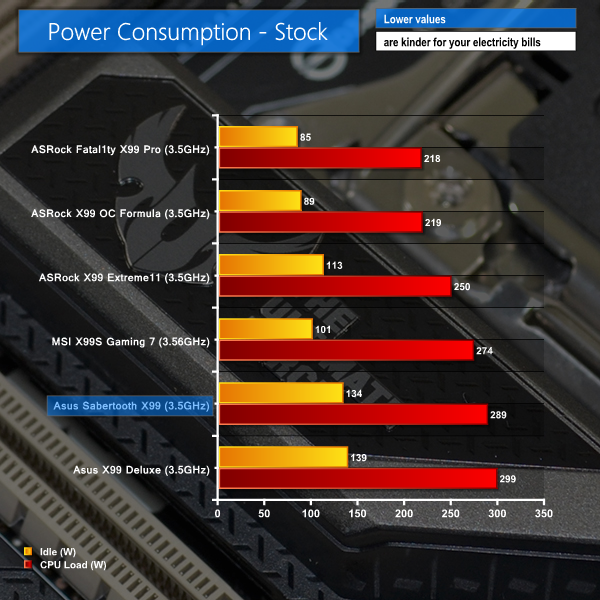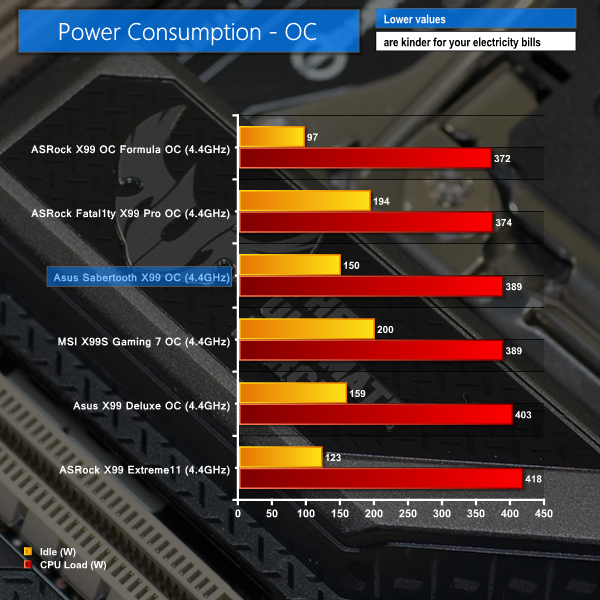We measured the power consumption with the system resting at the Windows 7 desktop, representing idle values.
The power consumption of our entire test system (at the wall) is measured while loading only the CPU using Prime95′s in-place large FFTs setting. The rest of the system’s components were operating in their idle states, hence the increased power consumption values (in comparison to the idle figures) are largely related to the load on the CPU and motherboard power delivery components.
With XMP enabled, forcing the CPU to its maximum core multiplier all of the time, Asus' Sabertooth X99 does not drop core voltage under lower loads. This results in high idle power consumption at stock clocks.
The higher-than-average use of a 1.20V CPU VCore when MCT is enabled also results in higher power consumption numbers for Asus' board when loaded at its stock-clocked level.
When the voltage is manually tweaked, however, power consumption numbers are more competitive with other boards. This implies that, from an efficiency perspective, the power delivery system is able to hold its own against similar offerings.
 KitGuru KitGuru.net – Tech News | Hardware News | Hardware Reviews | IOS | Mobile | Gaming | Graphics Cards
KitGuru KitGuru.net – Tech News | Hardware News | Hardware Reviews | IOS | Mobile | Gaming | Graphics Cards




